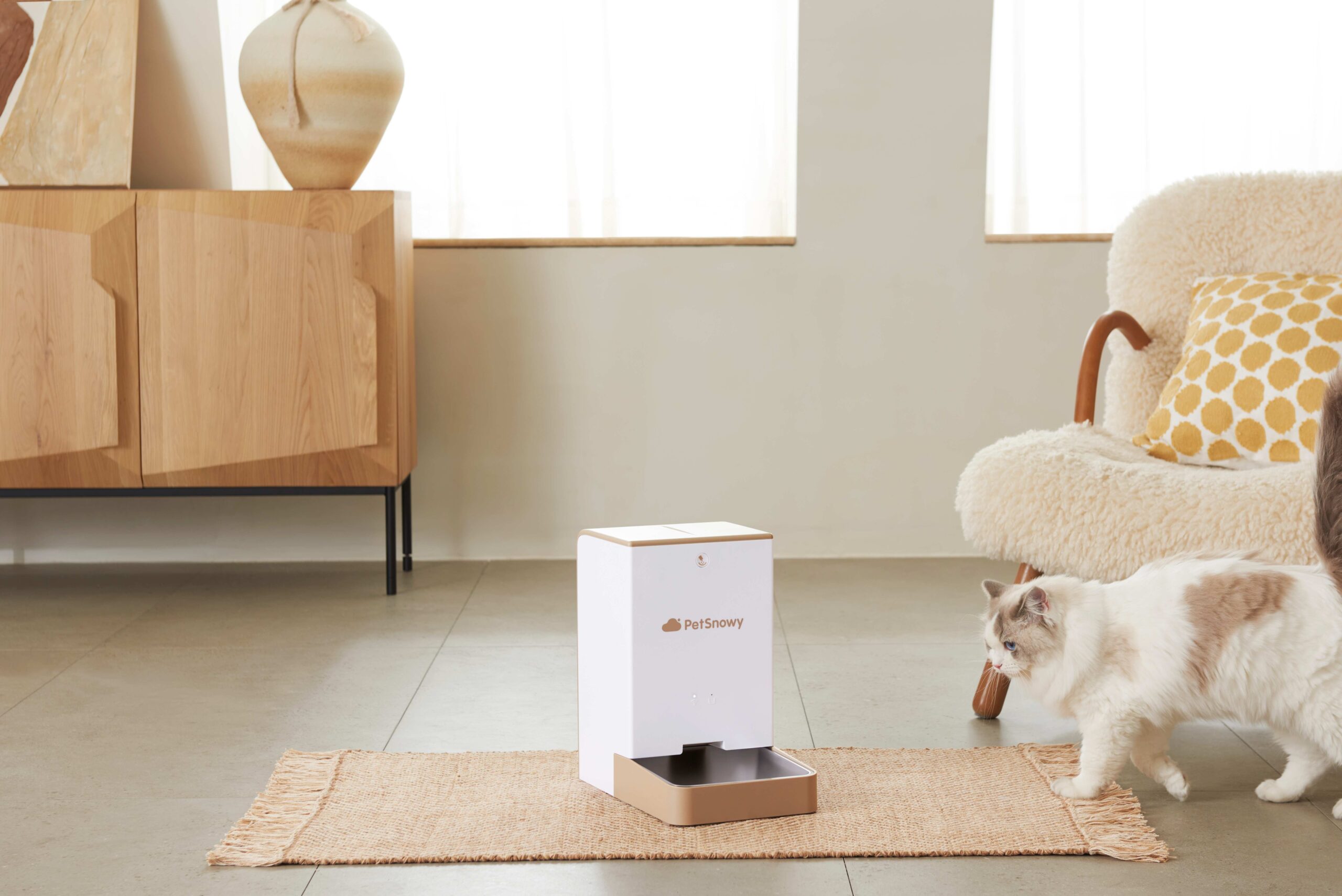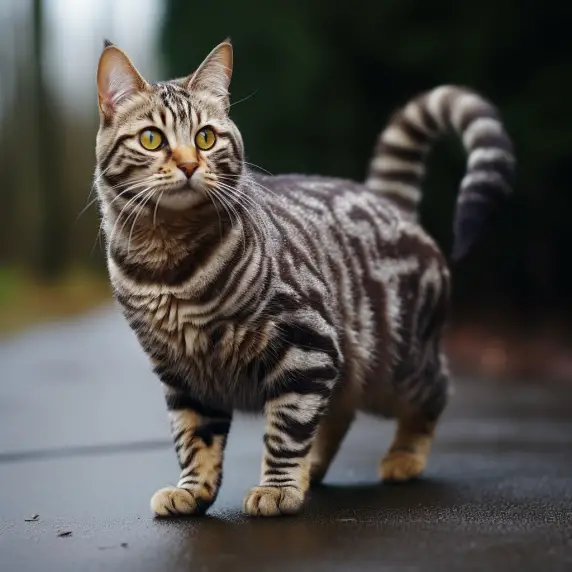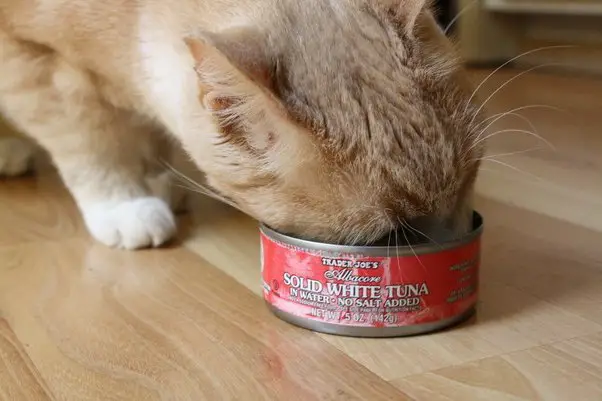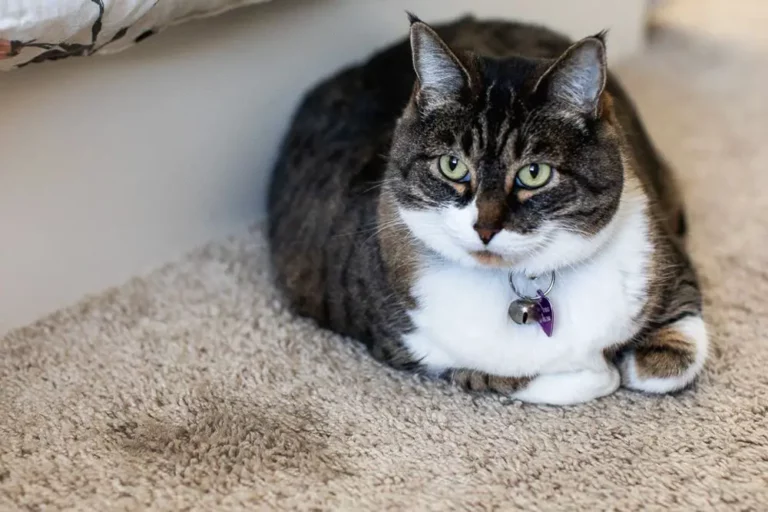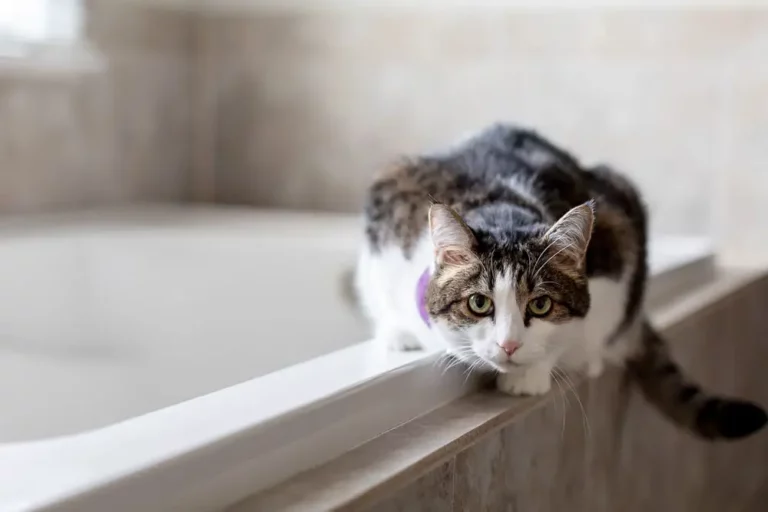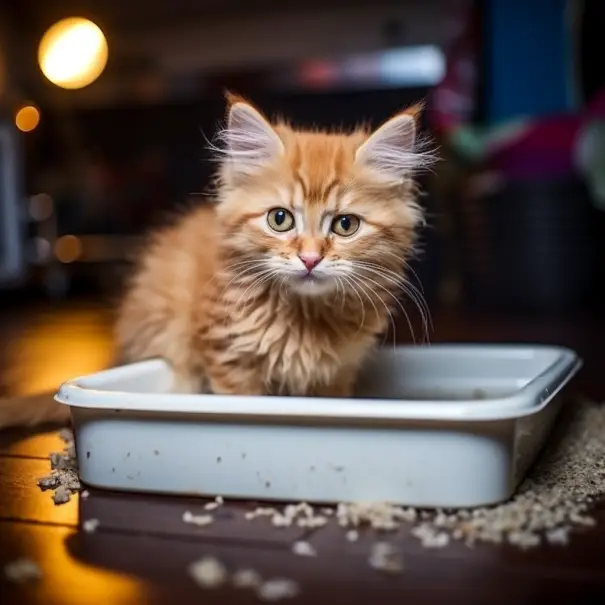How to Deal with Food Aggression in Cats: Tips and Techniques
If you’re a cat owner, you may have noticed instances where your feline friend becomes unusually possessive or defensive around food. This behavior, known as food aggression in cats, can be surprising and even unsettling.
As a pet parent, it’s essential to understand this behavioral pattern, its causes, and how to handle it effectively to ensure a peaceful mealtime environment.
The following post will dive deep into the topic, providing the knowledge you need to respond appropriately to your cat’s food aggression.
Key Insights At a Glance
- Food aggression in cats is a behavioral issue where cats display aggression or possessiveness around food.
- This behavior can stem from various factors, such as past trauma, competition, or medical conditions.
- Recognizing the signs is crucial in identifying food aggression. These may include growling, hissing, or swiping during feeding time.
- Addressing food aggression requires a combination of behavioral changes and medical interventions when necessary.
- You should always approach a food-aggressive cat with patience and understanding while seeking professional advice to handle the issue effectively.
Short Answer: Food aggression in cats is a manageable behavioral issue. Understanding its causes, signs, and potential solutions can help cat owners establish a peaceful and stress-free feeding environment for their feline friends. Depending on the severity and underlying causes, it may be necessary to seek professional help. Remember, every cat is unique, and what works for one may not work for another. Patience and consistency are key.
Table could not be displayed.Unraveling Food Aggression in Cats
Food aggression is a behavioral issue characterized by cats acting possessive or territorial around food.
It can manifest through a variety of behaviors, ranging from mild signs like eating quickly, to more alarming indications such as hissing, growling, or even resorting to physical aggression when someone, either human or animal, approaches them during meal times.
Understanding that food aggression isn’t a reflection of a cat’s character, but rather a behavioral response is crucial. Many factors may contribute to food aggression, each as unique as the feline friends we share our homes with.
One common factor is a cat’s history. If a cat has experienced trauma or food insecurity in the past, such as living on the streets or in a crowded shelter, they might develop food aggression as a survival mechanism.
Essentially, these cats have learned that they must fight to eat, and that behavior can persist even when they’re in a safe and secure environment.
Another contributing factor is competition. In multi-cat households, cats might display food aggression to establish dominance or secure their share of food, especially if they feel their access to food is threatened.
Underlying medical conditions can also trigger food aggression. Cats might become defensive around food if they’re experiencing pain or discomfort when eating. This could be due to dental problems, digestive issues, or other health conditions that make feeding time stressful or painful.
Food aggression, while potentially challenging for cat owners, is a manageable issue. Understanding its underlying causes is the first step in addressing and resolving this behavior, paving the way for a peaceful and harmonious feeding environment.
No products found.
Exploring the Causes of Food Aggression in Cats
There’s a multitude of reasons why food aggression in cats can occur, and the primary step in mitigating this behavior is identifying its root cause. Here are some common contributing factors:
- Past Trauma or Food Insecurity: Cats that have experienced past trauma, neglect, or food scarcity—such as former strays or shelter cats—may display food aggression as a lingering survival mechanism.
- Competition: In households with multiple pets, the presence of competition can cause food aggression. Cats may feel the need to guard their food from other pets to ensure they get their share.
- Underlying Medical Conditions: Cats may guard their food due to an underlying health issue, such as dental pain or digestive disorders. The discomfort associated with eating can make them associate food with pain, leading to defensive behavior around meals.
- Rapid Diet Changes: Sudden changes in a cat’s diet may also cause food aggression. This is because cats, being creatures of habit, may become stressed or upset with unfamiliar food and become possessive of their meals.
- Stress and Anxiety: Any significant alterations in a cat’s environment or daily routine can lead to stress and anxiety, which may trigger food aggression.
By recognizing the potential causes behind your cat’s food aggression, you can tailor a more effective solution to manage this behavior and restore a sense of calm during meal times.
Always consult a veterinarian or a feline behaviorist if you’re having difficulty identifying the root cause, or if the aggressive behavior persists despite your interventions.
Specific Signs of Food Aggression in Cats
Recognizing the signs of food aggression in cats is essential for effective management and timely intervention. Here are some telltale signs to look out for:
- Guarding Behavior: One of the most common signs of food aggression is when a cat guards its food bowl. This can involve a cat positioning its body to block access, or reacting defensively when someone or another pet approaches during meal times.
- Rapid Eating: Cats exhibiting food aggression may eat their food quickly—almost as if they’re afraid it’ll disappear. This behavior can potentially lead to health issues like choking or digestive upsets.
- Aggressive Body Language: Cats may show classic signs of aggression like hissing, growling, swatting, or even biting when they’re eating and someone gets too close. Ears may flatten, pupils might dilate, and the tail may puff up or twitch.
- Lingering Around the Food Area: Cats with food aggression might linger near the food area even when it’s not mealtime. They may also show signs of stress or aggression if the food area is approached.
- Aggression after Eating: Some cats may continue to show aggressive behavior even after they’ve finished their meal. This can involve guarding an empty food bowl or the food storage area.
If you notice any of these signs in your cat, it’s important not to dismiss them. They indicate that your cat feels threatened or insecure during feeding times, and it’s crucial to address these issues for your cat’s well-being.
When a Cat Suddenly Becomes Food Aggressive
A cat that suddenly becomes food aggressive can be quite alarming. This sudden behavioral change can happen for several reasons:
- Medical Issues: Sudden food aggression can be a sign of an underlying health issue. Dental problems, for instance, can make eating painful, causing a cat to become protective of its food. Digestive disorders or other conditions causing discomfort may also lead to this behavior. If your cat suddenly starts showing signs of food aggression, a vet check-up should be your first step.
- Changes in the Environment: Changes in the household, such as the addition of a new pet, a move, or even a change in the feeding schedule, can trigger food aggression. Cats thrive on routine, and disruptions can lead to stress, which may manifest as food aggression.
- Previous Trauma or Neglect: For rescue cats, sudden food aggression could be linked to past experiences. Cats who’ve had to compete for food or who have experienced hunger may develop food aggression, even if they’re now in a safe environment with consistent access to food.
- Increased Hunger: If your cat seems excessively hungry, they might become more protective of their food. Increased hunger can be a symptom of various health issues, including diabetes, hyperthyroidism, or certain medications.
Sudden onset of food aggression shouldn’t be ignored. Consulting a professional—be it a veterinarian or a cat behaviorist—can help identify the root cause and devise an appropriate solution.
Understanding Food Aggression in Kittens
Food aggression in kittens is not uncommon and can arise from a variety of factors:
- Litter Competition: Kittens born into large litter often have to compete for resources, including food. This competition can instill a ‘survival of the fittest’ mentality, leading to food aggression.
- Early Weaning: Kittens separated from their mother too soon may not learn proper eating etiquette. This lack of early socialization can lead to aggressive behavior around food.
- Insufficient Food: If a kitten doesn’t get enough to eat, it might start to guard what little food it has, showing signs of food aggression.
- Rapid Eating Habits: Kittens, being small and energetic, tend to eat quickly, which can sometimes be mistaken for food aggression.
Addressing food aggression in kittens early is crucial. Timely intervention can prevent this behavior from carrying over into adulthood.
It’s beneficial to reinforce positive behavior. For instance, offering praise or petting your kitten when they eat calmly can encourage a more relaxed approach to mealtime. If you’ve recently adopted a kitten showing signs of food aggression, consider seeking advice from a vet or a cat behaviorist.
They can provide guidance tailored to your kitten’s specific needs. Remember, patience is key; changing behavior takes time.
Food Aggression Between Cats
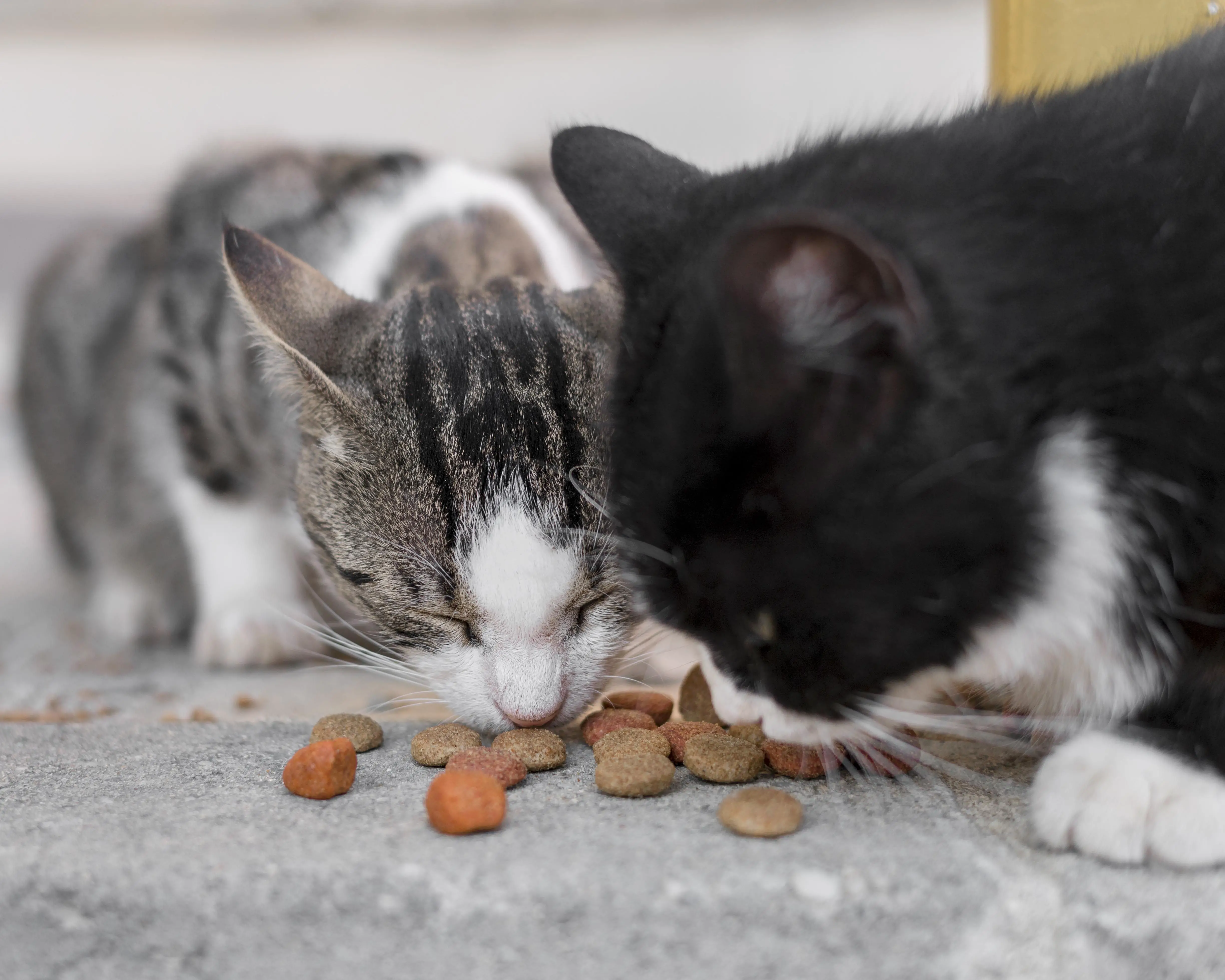
Food aggression between cats often originates from competition for resources, a natural instinct in feline behavior. This situation can become pronounced in multi-cat households, especially when there’s a significant difference in the cats’ ages, sizes, or health statuses.
- Separate Feeding Spaces: Providing each cat with a separate feeding area can minimize the tension. It’s important that each cat feels safe and unthreatened during mealtime.
- Different Feeding Times: If possible, try feeding the cats at different times. This can prevent more dominant cats from eating others’ food.
- Consistent Routine: Cats thrive on routine. Maintaining a consistent feeding schedule can help reduce anxiety around mealtime, lessening the likelihood of food aggression.
- Adequate Resources: Ensure there are enough resources for all the cats. This includes food, water, litter boxes, and even toys. A sense of scarcity can heighten competition and aggression.
Remember, every cat is unique, and what works for one may not work for another. If you’ve tried these strategies and food aggression between your cats persists, consider consulting with a cat behaviorist or a veterinarian for further advice.
Can Wet Food Make Cats Aggressive?
Many cat owners wonder if certain types of food, specifically wet food, can make their cats more aggressive, especially during meal times. The answer, however, is generally no. There’s no scientific evidence to suggest that wet food, by its nature, induces aggression in cats.
The type of food (wet or dry) doesn’t typically affect a cat’s behavior, but the context around feeding might. Cats can become overly eager or even show signs of aggression if they especially enjoy their food or if they were previously in a situation where food was scarce.
For instance, a cat that loves wet food may become impatient or protective over their meal. This isn’t a direct result of the wet food itself, but the cat’s anticipation and excitement about a favored meal.
If you notice aggressive behavior during feeding time, regardless of the type of food:
- Consistent Feeding Times: Regular feeding times can help your cat feel secure, knowing that their next meal is guaranteed.
- Calm Environment: A quiet, safe space for your cat to eat can reduce anxiety and potential aggression.
- Sufficient Quantity: Ensuring your cat gets enough to eat can minimize the fear of scarcity, which can trigger aggression.
Remember, every cat is unique. If you’re concerned about your cat’s behavior around mealtime, consult your veterinarian or a cat behaviorist for personalized advice.
Dealing with Feral Cat Food Aggression
Feral cat food aggression is a common issue due to the often harsh conditions these cats live in. Survival for feral cats is largely a matter of competition, with food resources often being scarce and highly sought after.
As a result, these cats can become extremely protective of food, showing aggressive behavior to fend off potential competitors.
However, dealing with a feral cat’s food aggression requires understanding, patience, and often a bit of professional guidance. Here’s how you can approach this:
- Provide Ample Food: One of the main causes of food aggression in feral cats is the fear of food scarcity. By ensuring there’s plenty of food available, you can help alleviate this fear and potentially reduce aggressive behavior.
- Establish Feeding Stations: If you’re feeding more than one feral cat, set up multiple feeding stations at different locations. This gives each cat its own space to eat, reducing the need for competition and aggression.
- Gradual Socialization: Feral cats aren’t accustomed to human contact, so gradual socialization is key. Spend time near them during feeding without trying to touch or handle them. Over time, they may start to associate your presence with food and feel less threatened.
- Professional Help: If aggression persists, consider reaching out to a professional cat behaviorist or a local trap-neuter-return (TNR) program. They can provide valuable insights and solutions tailored to the specific cat’s needs.
Keep in mind, a feral cat’s life is dictated by survival instincts. Food aggression is a survival strategy, not a sign of a ‘bad’ cat. With patience and understanding, you can help manage food aggression and create a safer and more comfortable environment for these cats.
The Impact of Food Aggression
Food aggression is more than just an inconvenient behavior. It has far-reaching implications, affecting not only your cat’s well-being but also your relationship with your pet and the harmony of your household. Understanding these impacts can motivate you to address the issue promptly and effectively.
Stress Levels: Cats with food aggression are often under a high degree of stress. This heightened state of anxiety can impact their overall health, potentially leading to a compromised immune system, gastrointestinal issues, and other stress-related conditions.
Inter-cat Relationships: If you have multiple cats, food aggression can lead to disrupted social dynamics. It might lead to fights, and tension, and can even result in injury.
Human-Animal Bond: Severe food aggression can strain your relationship with your cat. It might make meal times stressful, and if not addressed properly, it can cause fear or frustration.
Behavioral Issues: Food aggression can sometimes lead to other forms of aggression or behavioral problems. It’s essential to address it before it escalates to avoid more complex issues.
Remember, food aggression is not a character flaw in your cat, but a behavior arising from certain underlying issues. Identifying and addressing these can help reduce aggression, leading to a calmer, happier cat, and a more peaceful home.
Step-by-Step Guide to Managing & Mitigating Food Aggression
Food aggression in cats, while problematic, can be managed and mitigated with the right approach. Here’s a step-by-step guide on how to handle food aggression in your cat.
1. Assess the Situation: First, identify whether the aggression is truly food-related. Look for the specific signs of food aggression we discussed earlier and rule out any medical issues that could be causing the behavior.
2. Consult a Veterinarian: Once you’ve determined that the issue is likely food aggression, consult a veterinarian. They may be able to identify any underlying health issues contributing to the behavior or refer you to a behaviorist for more specialized help.
3. Implement a Feeding Schedule: Regular, controlled meal times can help reduce anxiety around food. Ensure your cat knows they will get fed regularly and at the same times every day.
4. Separate Feeding Areas: If you have multiple cats, separating their feeding areas can help reduce competition and aggression. Make sure each cat has a quiet, undisturbed place to eat.
5. Gradual Desensitization: If your cat becomes aggressive when you’re near their food, slowly desensitize them to your presence. Start by standing farther away and gradually reduce the distance over time, rewarding calm behavior with treats or praise.
6. Try Different Food Types: If your cat is extremely possessive of a particular type of food, try introducing different varieties to lessen the perceived value of the favored food.
7. Provide Adequate Resources: Make sure there are enough resources (like food bowls or even litter boxes) in multiple-cat households to prevent competition.
8. Positive Reinforcement: Reward your cat for calm behavior during feeding times. This could be through praise, petting, or providing a treat after a peaceful meal.
Remember, patience is key when managing food aggression. Changes will not happen overnight, but with consistent effort, you can help your cat become more relaxed and less aggressive around meal times.
Training Cats to Curb Food Aggression
Behavioral therapy plays a significant role in managing food aggression in cats. The goal is to shift the cat’s negative associations and reactions to a more positive, calm response. Here are some effective behavioral training methods you can try:
1. Counter-Conditioning: This method involves changing your cat’s emotional response to a trigger, in this case, the presence of food or another cat during feeding times. The idea is to associate the trigger with something positive, like a treat or petting, so the cat no longer reacts aggressively.
2. Desensitization: Desensitization involves gradually exposing your cat to the trigger in a controlled environment to reduce their sensitivity over time. For instance, you can start by feeding your cat with you present but at a distance that doesn’t provoke aggression. Gradually, you decrease the distance as your cat becomes more comfortable.
3. Operant Conditioning: Here, you can use rewards (positive reinforcement) or consequences (negative reinforcement) to shape your cat’s behavior. Reward your cat for non-aggressive behavior during feeding times, such as sitting calmly or waiting patiently.
4. Clicker Training: Clicker training is a form of operant conditioning where a distinct click sound is used to mark the desired behavior. The click is immediately followed by a reward, helping your cat make a positive association.
Remember, it’s essential to work at your cat’s pace and never force them into a situation where they feel threatened or stressed. You may need to adjust the training techniques based on your cat’s reactions and progress.
And always consider seeking professional help if you’re struggling to manage your cat’s food aggression on your own.
When to Consult a Veterinarian
In some instances, your cat’s food aggression may require a professional touch. It’s crucial to understand that aggression can sometimes be a sign of an underlying medical issue. Pain, discomfort, or any physical ailment could make your cat irritable and prone to aggressive behavior, particularly when eating.
The following are signs that it’s time to consult a veterinarian:
1. Sudden Onset of Aggression: If your typically mild-mannered cat suddenly becomes food aggressive, it could signal a medical issue that needs to be addressed.
2. Other Behavioral Changes: Besides food aggression, if you observe additional behavioral changes such as increased aggression in other contexts, litter box issues, or changes in sleep patterns, it’s time to see a vet.
3. Changes in Appetite or Weight: If food aggression is accompanied by a significant increase or decrease in appetite, or unexplained weight loss or gain, medical intervention is necessary.
4. Visible Signs of Illness: Obvious signs like vomiting, diarrhea, excessive thirst, or noticeable discomfort should prompt an immediate vet visit.
In such cases, your vet will conduct a thorough examination and may perform diagnostic tests to rule out medical conditions. In rare cases, pharmacological intervention might be recommended.
Medications, such as anti-anxiety drugs, can be used temporarily in conjunction with behavioral therapy to manage severe cases of food aggression.
Always remember, it’s vital to keep open communication with your vet about your cat’s progress and any concerns you have.
How to Avoid Food Aggression from Developing in Cats
While food aggression in cats can be a challenging issue, the good news is there are several preventive measures you can adopt to discourage such behavior from developing. Here are a few practical strategies:
1. Provide Adequate Resources: Ensure each cat has its own food bowl. If you have multiple cats, you might also consider having multiple feeding locations to minimize competition.
2. Stick to a Regular Feeding Schedule: Consistent feeding times can help reduce anxiety about food availability, which can curb food aggression.
3. Gradual Introduction of New Foods: If you’re introducing a new diet to your cat, do so gradually over a week or so. This slow transition can prevent them from becoming protective over unfamiliar food.
4. Socialization: Early socialization can significantly reduce the likelihood of food aggression, particularly in kittens. It helps them learn to be comfortable around others during meal times.
5. Monitor Your Cat’s Eating Behavior: Keep an eye on your cat during meal times, especially when introducing a new cat into the household. By watching for early signs of food aggression, you can intervene and address the issue promptly before it escalates.
6. Stay Calm During Feeding Times: Cats can pick up on your stress and anxiety. By staying calm during feeding times, you can create a relaxed and peaceful atmosphere that can deter aggressive behavior.
Remember, every cat is unique and may respond differently to various strategies. The key is to be patient and consistent in your approach. If you’re unsure, don’t hesitate to consult with a professional such as a certified cat behaviorist or your vet.
Related:
Frequently Asked Questions
1. How do you stop food aggression in cats?
Stopping food aggression in cats requires a multifaceted approach. This includes providing separate resources for each cat, implementing a consistent feeding schedule, socializing kittens from an early age, and using behavioral modification techniques like positive reinforcement. In more severe cases, consultation with a veterinarian or a certified cat behaviorist may be necessary.
2. What are the warning signs of aggression in cats?
Warning signs of aggression in cats can vary but typically include growling, hissing, swatting, tense body language, flattened ears, dilated pupils, and tail thumping or puffing. If you notice these signs, especially during feeding times, it could indicate food aggression.
3. Is it normal for kittens to have food aggression?
While it’s not necessarily “normal,” kittens can display food aggression, particularly if they were weaned too early, have experienced food scarcity, or lack socialization. It’s essential to address this behavior promptly to prevent it from carrying into adulthood.
4. Can food aggression lead to other forms of aggression?
Yes, if left unchecked, food aggression could potentially escalate into other forms of aggression. It can create a hostile environment and trigger other aggressive behaviors, especially in a multi-cat household.
5. Is food aggression more common in certain cat breeds?
Food aggression is not breed-specific and can occur in any cat, regardless of breed. It is generally more related to a cat’s individual experiences, upbringing, and personality.
6. How can I feed multiple cats in the same household to avoid food aggression?
Avoiding food aggression in a multi-cat household involves creating a stress-free feeding environment. Provide separate food bowls and consider feeding your cats in different locations to minimize competition. Stick to a consistent feeding schedule and monitor interactions during meal times to intervene if necessary.
Final Thoughts: Nurturing a Healthy Relationship with Food
Understanding and managing food aggression in cats is crucial to maintaining a harmonious and stress-free environment in your home. By recognizing the signs of food aggression, implementing preventive measures, and intervening when necessary, you can help your cat develop a healthier relationship with food.
Remember, food aggression is not a reflection of a cat’s character but a sign of underlying stress, fear, or past experiences. With patience, consistency, and love, you can transform your cat’s eating experience from a source of anxiety to a moment of comfort and security.
Cats, just like us, can have complex relationships with food. It’s our role as responsible pet parents to ensure that these relationships are healthy, positive, and free from stress. If food aggression persists despite your efforts, don’t hesitate to reach out to a professional for help.
With their expertise, they can provide individualized strategies tailored to your cat’s unique needs. Let’s work together to create a world where every mealtime is a joy for our feline friends.
References
- Food Aggression in Cats – Wag!
- How to Deal with Food Aggression in Cats – Comforted Kitty
- Helping Your Cat Overcome Food Aggression – Pets Radar
- Understanding Food Aggression in Cats – Bondi Vet
- ASPCA. (2021). “Aggression in Cats”. ASPCA
- Horwitz, D.F., Neilson, J.C. (2007). “Blackwell’s Five-Minute Veterinary Consult Clinical Companion: Canine and Feline Behavior”. Blackwell Publishing.
- Overall, K.L. (2013). “Manual of Clinical Behavioral Medicine for Dogs and Cats”. Elsevier Health Sciences.
- ASPCA. (2021). “Are You Feeding Your Cat the Best Diet”. ASPCA
- Buffington, C.A.T. (2002). “External and internal influences on disease risk in cats”. Journal of the American Veterinary Medical Association, 220(7), 994-1002.

